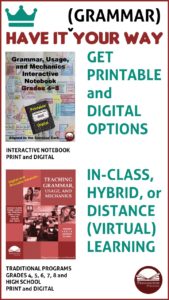Distance Learning for Parents | Virtual Learning Advice
I know you didn’t sign up for this. It’s tough teaching at home; it’s especially tough teaching your own kids at home. You don’t have the training, nor the tools. Your first go-round of in-home teaching last spring may have been an epic fail. However, before you pour that second glass of wine or click out of this article, let me give you some good news. You’ve got this!
You are reading this article because you care. You want the best for your kids and know that throwing a pity party for yourself or playing the blame game is not going to get the job done. Besides the emotional, physical, and spiritual health of your children, nothing is a greater priority than your child’s education.
So, you are right to be concerned about Covid Brain Drain. As a recently-retired teacher, I’m active on all the teacher Facebook groups, and I can tell you that the news from teachers welcoming back their students is that students have not made the traditional year to year growth. Additionally, student work ethic has taken some serious hits. Teachers will do their best to catch up their students, but this is not business as usual. They’ve never done this before, and despite their commitment and effort, they don’t have the training, nor the tools, to completely revamp what they’ve done for years. School district administrators have done the best they can, but money that could have been invested in teacher training and tools had to be diverted to Covid-proofing retrofits, cleaning, hiring of nurses, etc.
I know, first hand, that this is the case. I’m a small publisher of teaching resources, and despite the fact that I have developed a number of sure-fire digital resources, they’re not selling like hotcakes. District staff are telling me that they have no money to purchase new materials. I’m still selling to individual teachers, but many of them are looking at salary freezes and lay-offs. So, district administrators and teacher are looking for as many free distance learning resources as possible. Now, you don’t always get what you pay for, but more times than not, the free resources are not going to captivate the attention of you or your child.
So, what to do?
- Accept the fact that you are primarily responsible for the education of your child, not your teacher and not your child. The teacher may be amazing, but even the best have shortcomings, especially with Covid restraints and challenges. Your child is probably like 99% of the students I taught at the elementary, middle school, high school, and community college level i.e., learning is not their highest priority and their parents and teachers are not the main characters in their own stories. The 1% are rarities. I’ve “taught” some of these self-starters and high achievers, but they are simply not normal.
- Analyze what the teacher is and is not teaching, and supplement as needed. Face it, you’re going to have to invest some time and money in learning how to supplement the teacher’s instruction for your child.*
- Be extremely and overtly positive about what and how the teacher is teaching. If you are not naturally inclined to do so, fake it ’til you make it for the benefit of your child. Send complimentary emails to the teacher and cc the principal. Honey draws more flies than vinegar.
- Reward (bribe) your children to do their best work. Extrinsic rewards, especially short-term, task-specific rewards, work. Leave the intrinsic reward development until Covid is over.
- Provide the supplies your child needs to succeed, and keep other children out of their work area as much as possible.
- Help your child stick to a schedule. If your child’s teacher has a ZOOM meeting at nine each morning and records it, keep your routine the same and don’t use the recording as an excuse to work around your schedule.
What not to do?
- Don’t coddle your kid. Make your child reads and re-reads the assignment directions and does the work. Don’t make excuses for your child’s lack of effort. Don’t fill in the gaps. Don’t contact your child’s teacher when the child should be doing so.
- In your supplemental teaching, don’t pass out the workbook/worksheet and expect it to teach your child. Specific worksheets can provide ideal independent practice, but only after you have taught the concept, content, or skill and provided some guided practice.
- Although parents should have high expectations of their children, don’t ignore the debilitating effects of social distancing. Know when and when not to cut your kid some slack.
* From my experience, these four subject areas tend to be lower instructional priorities for most teachers’ distance learning/virtual learning:
Pennington Publishing provides digital and printable resources for each of these subject areas. Each resource has a diagnostic assessment to determine what your child knows and does not know. Video tutorials are also provided. You don’t have to have a teaching degree to be successful with these products. Plus, my email and phone number are on my website and I love to help parents decide which programs will best supplement instruction for their children, and I also answer any questions about how to use the materials. As a reading specialist (MA Reading Specialist), I am skilled reading diagnostician. If you have need of these services, click HERE for further information.
Grammar/Mechanics, Reading, Spelling/Vocabulary, Study Skills


